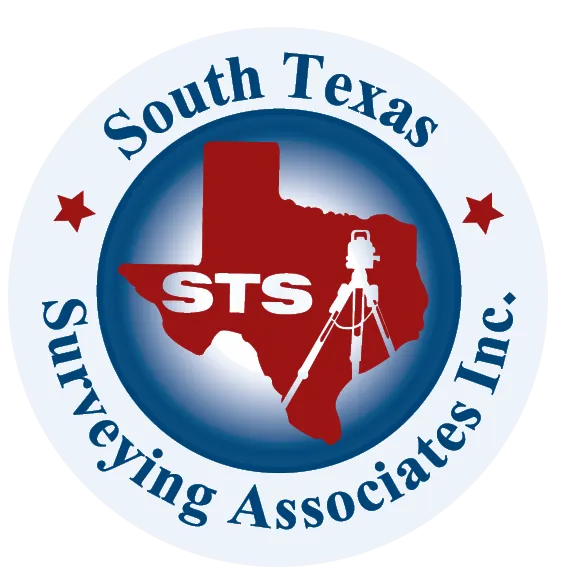Surveying Texas Since 1980 Family Owned, Customer Devoted | Firm #10045400 | 281-556-6918
See Our Latest Blogs

Land Surveying Tips for Texas Property Owners Near Protected Wetlands
"Texas, often referred to as the Lone Star State, is a thriving hub for economic growth and innovation, making it an attractive destination for commercial real estate investment." - Chris Evans
Essential Land Surveying Tips for Texas Property Owners Near Protected Wetlands
For property owners in Texas, especially those near protected wetlands, understanding land use regulations and environmental requirements is essential. Wetlands play a critical role in maintaining ecosystems by supporting wildlife habitats, filtering water, and mitigating flooding. While these areas offer unique development opportunities, they also come with stringent environmental guidelines to ensure preservation.
Land surveying is a crucial step in navigating these challenges. By identifying wetland boundaries, easements, and regulatory requirements, property owners can balance development goals with environmental stewardship. This guide explores practical land surveying tips for Texas property owners near protected wetlands and highlights how professional surveys can help ensure compliance and successful project planning.
Why Are Protected Wetlands Significant?
Wetlands are among the most ecologically significant areas in Texas, offering benefits like flood control, water purification, and biodiversity conservation. Federally and state-protected wetlands, governed by agencies like the U.S. Army Corps of Engineers (USACE) and the Texas Commission on Environmental Quality (TCEQ), are subject to strict regulations.
For property owners, this means that any activity near wetlands—whether it’s construction, drainage alteration, or landscaping—requires careful planning and often requires permits. Failing to adhere to these regulations can result in fines, project delays, or even forced remediation.
Land surveys are the foundation for understanding wetland boundaries and developing projects that comply with these environmental standards.
Land Surveying Tips for Property Owners Near Wetlands
Navigating property development near wetlands requires a combination of precision, compliance, and planning. Here are essential tips to guide property owners:
1. Identify Wetland Boundaries with a Professional Survey
The first step in any development project near wetlands is to clearly identify their boundaries. A wetland delineation survey uses soil analysis, vegetation assessment, and hydrology studies to define the exact limits of wetlands on or near your property.
This survey helps property owners:
Avoid encroaching on protected areas
Plan construction activities outside wetland zones
Comply with permitting requirements
2. Conduct a Topographic Survey for Drainage Analysis
Wetlands are heavily influenced by water flow and drainage patterns. A topographic survey provides detailed elevation data, helping property owners understand how water moves across the land. This is critical for:
Designing drainage systems that avoid impacting wetlands
Preventing water pooling that could harm nearby ecosystems
Planning stormwater management systems that comply with local regulations
3. Check for Easements and Land Use Restrictions
Easements near wetlands may include access rights for conservation groups, utility companies, or flood control authorities. A boundary survey combined with an easement survey ensures you’re aware of any legal restrictions or third-party access rights on your property.
4. Secure Necessary Permits Before Starting Work
Activities near protected wetlands often require permits from federal, state, or local authorities. For example:
The Clean Water Act (Section 404) regulates the discharge of materials into wetlands.
The TCEQ may require permits for projects impacting water quality.
A professional surveyor can provide the documentation needed for permit applications, including wetland maps and compliance reports.
5. Use GIS Mapping for Comprehensive Analysis
Geographic Information System (GIS) mapping integrates data from wetland delineation surveys, topographic surveys, and boundary surveys into a single platform. This technology provides a holistic view of your property and helps identify the best areas for development while minimizing environmental impact.
6. Plan Construction Around Buffer Zones
Wetland regulations often require buffer zones between the wetland boundary and construction activities. These buffers help protect wetland ecosystems from disturbances like erosion, runoff, and pollution. Surveyors can mark buffer zones to ensure that your project adheres to these requirements.
7. Consider Future Wetland Expansions
Wetlands can expand over time due to natural processes or changes in water flow. Planning for potential wetland expansion can help you avoid future conflicts and ensure long-term compliance. Periodic surveys can track changes and keep your property records up to date.
How Land Surveys Protect Wetlands and Property Owners
1. Preventing Regulatory Violations
Surveys provide accurate data to ensure compliance with wetland regulations, reducing the risk of legal issues, fines, and project delays.
2. Enhancing Property Value
Properties near wetlands can offer aesthetic and ecological value, particularly if the wetlands are preserved and integrated into the design. Surveys ensure the property is developed responsibly, enhancing its appeal to buyers or tenants.
3. Supporting Sustainable Development
By mapping wetland boundaries and drainage patterns, surveys help property owners design environmentally responsible projects that minimize disruption to local ecosystems.
4. Facilitating Efficient Project Planning
Accurate survey data allows developers to plan projects more effectively, identifying suitable building sites, avoiding restricted areas, and reducing costly redesigns.
The Surveying Process for Wetland Properties
Conducting land surveys near wetlands involves several specialized steps to ensure compliance and accuracy:
1. Preliminary Research
Surveyors review existing maps, aerial imagery, and legal records to identify known wetland areas, easements, and land use restrictions.
2. On-Site Data Collection
Surveyors visit the site to conduct wetland delineation, topographic mapping, and boundary surveys. They use tools like GPS, LiDAR, and soil sampling equipment to collect precise data.
3. Data Analysis and Map Creation
Survey data is analyzed to create detailed maps showing wetland boundaries, elevation contours, and easements. These maps are essential for planning, permitting, and compliance.
4. Reporting and Recommendations
The final survey report includes maps, legal descriptions, and recommendations for development. This report helps property owners navigate regulatory requirements and make informed decisions.
Frequently Asked Questions (FAQs)
What is a wetland delineation survey?
A wetland delineation survey identifies and maps wetland boundaries based on soil, vegetation, and hydrology characteristics. It’s a critical step for any project near wetlands to ensure compliance with environmental regulations.
Are all wetlands protected in Texas?
Not all wetlands are federally or state-protected, but many fall under the jurisdiction of the Clean Water Act. A professional survey can help determine if the wetlands on your property are protected.
Do I need a permit to build near wetlands?
Yes, most construction activities near wetlands require permits. The specific permits depend on the type of project, the location, and the regulatory authority overseeing the wetlands.
How can surveys help reduce construction costs?
By identifying wetland boundaries and easements early, surveys help avoid costly redesigns, legal disputes, and fines. Accurate data allows for efficient planning and resource allocation.
What happens if wetlands are disturbed during construction?
Disturbing protected wetlands without proper permits can result in significant fines, project stoppages, and required remediation. Surveys help prevent such violations by mapping sensitive areas.
How often should I update wetland surveys?
Wetland conditions can change over time due to environmental factors. Property owners should update surveys periodically, especially before starting new construction projects or selling the property.
For Texas property owners near protected wetlands, land surveying is an essential tool for balancing development goals with environmental preservation. From identifying wetland boundaries to ensuring compliance with regulations, surveys provide the clarity and data needed to make informed decisions and protect property value.
At South Texas Surveying, we specialize in wetland delineation, boundary surveys, and topographic mapping tailored to the unique needs of properties near protected wetlands. With our expertise, you can confidently navigate the complexities of wetland regulations and develop responsibly.
Contact South Texas Surveying today to learn how our land surveying services can support your property’s success while preserving Texas’s valuable wetland ecosystems.
Delivering Land Surveys with Attention to Detail
George Owens
Commercial Broker

I have worked with many surveying companies, but South Texas Surveying stands out for their exceptional professionalism, attention to detail, and commitment to their clients.
Kim Wexler
Project Manager

Their accurate and thorough surveys make my job a lot easier, their ability to communicate effectively with all parties involved is commendable. I highly recommend South Texas Surveying.
James Cart
Homeowner

As a new homeowner, I was thoroughly impressed with the professional service provided by South Texas Surveying. I high recommend their services to any one buying a home in Houston.
Contact Us
Email: [email protected]
Office Address: 11281 Richmond Ave
BLDG J, Suite 101,
Houston, TX 77082
Office Hours: Mon – Fri 8:00am – 5:00pm
Office Phone Number: 281-556-6918
11281 Richmond Ave
BLDG J, Suite 101,
Houston, TX 77082
Firm Number: 10045400
Resources
© Copyright 2024 South Texas Surveying Associates
